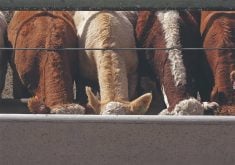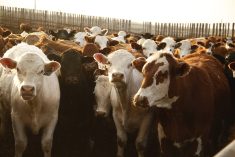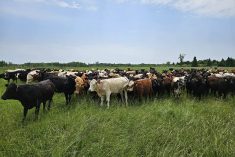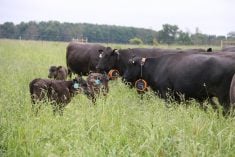Young farmer followed his dream, started beef operation on rented land
Tom Aikins is humble about receiving the 2023 Beef Farmers of Ontario Mapleseed Pasture Award.
“They decided they wanted to give me this,” said the first-generation farmer from Ravenna, Grey County, during the BFO dinner following its annual meeting last month.
“I don’t really know why. I’m not reinventing the wheel, but we’re raising cattle and rotationally grazing.”
Read Also
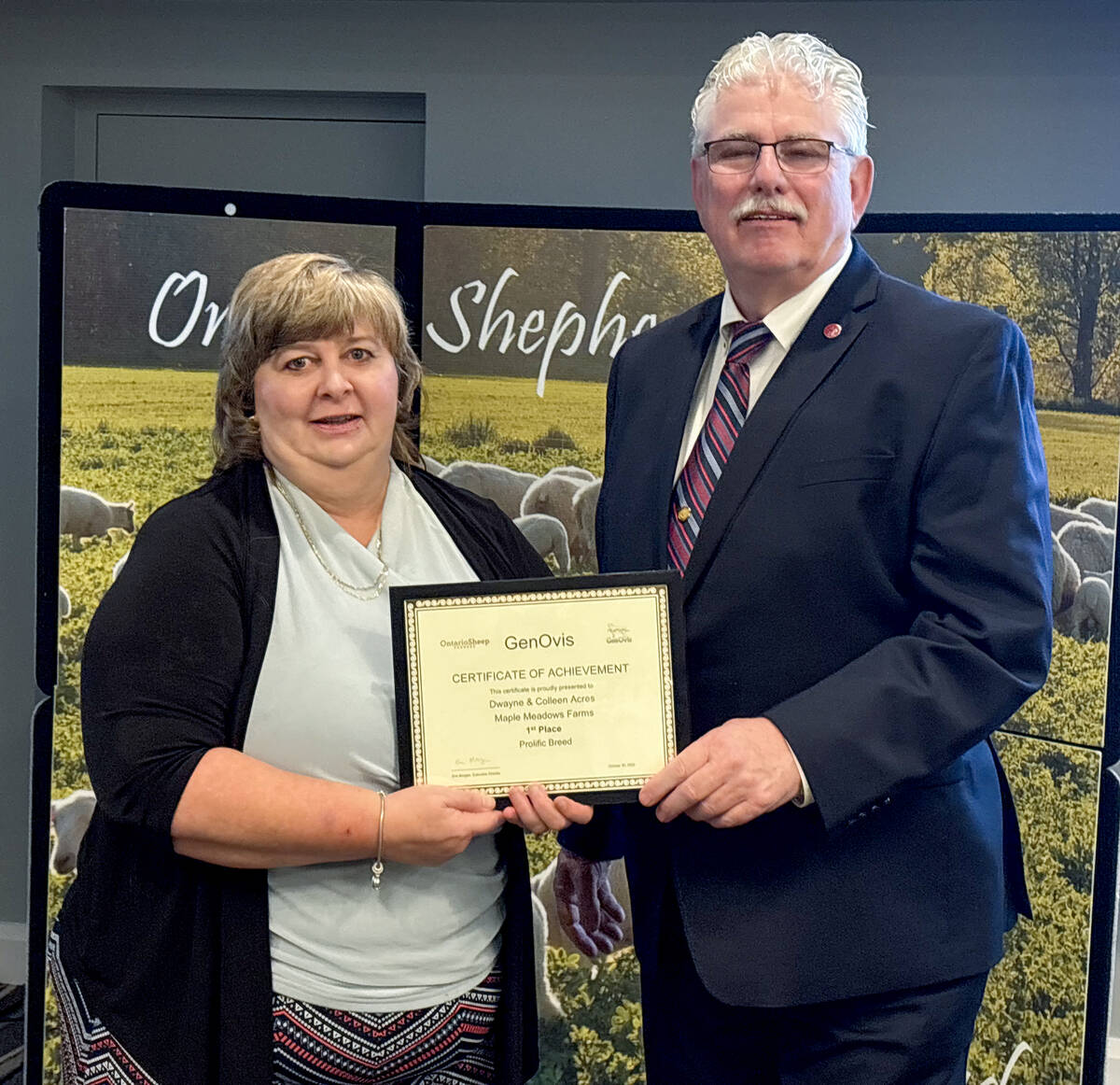
GenOvis awards presented at Ontario Sheep Farmers’ annual meeting
Producers and youth were recognized for their contributions during the Ontario Sheep Farmers’ annual GenOvis and leadership awards.
The award acknowledges Aikins’ efforts to improve organic matter and soil fertility through year-round rotational grazing of his cattle on rented land while building his herd and equity. It comes with a bag of Mapleseed forage seed and $250.
Why it matters: The Mapleseed award recognizes Ontario beef farmers who do outstanding work managing pasture and who know the role cattle play in maintaining healthy soils.
“We’re always endeavouring to celebrate folks looking to find ways for stewardship, innovation and practical use and take all that knowledge and show success,” said Scott Fisher, Mapleseed western Ontario sales manager. “This year’s recipient exhibited all those qualities.”
Aiken didn’t grow up on a farm but always had a keen interest in working the land. In 2018, at 19 years old, he rented his first farm.
Neighbouring farmers shared their knowledge and provided him with part-time farm employment while he built his herd to its current level of 45 cows and five replacement heifers. He also custom feeds 30 calves.
“We graze about 70 acres. It’s kind of up and down depending on when we’ve got in hay and whether we lose fields or not,” said Aikins, who has 200 acres in hay and 60 acres of cash crops.
Aikins works full-time off farm. His cows calve on grass in May and he moves them often.
His original rented farm had no fences, so he strung 14-gauge and polywire around a five-acre plot, put in a barnyard and started grazing cattle in June.
“They were in there for a little bit too long, but I had other stuff to do. From there, we fenced … 11 acres and just carried on,” he said. “I did not have a place for these cows to go until I put up the next chunk of fence, so that’s fairly steady rotation.”
In the following years, Aikins split the acres into smaller paddocks and moved cows once a day – or once every two weeks in haying season.
The second farm Aikins rented was part of the 2,000-acre Kolapore swamp, he introduced electric fencing to control cow movement.
“If you want to do this, you don’t really have an excuse because these cows never saw an electric fence, and I didn’t have fences on the other farm,” Aikins said. “Within a year, I had these cattle strip grazing sorghum. But that fence had a good jolt on it. I did not like to touch it, and neither did they.”
The main difference between his operation and most others is the way he winter feeds on pasture and has structures to house his cattle. Aikens said 25 cows overgrazed the second farm before he rented it.
In winter he moves them along, similar to strip grazing, but with a bale of hay. Because of the resulting manure being incorporated into the pasture, in conjunction with some mild rest, he said it went from a “golf course-like” production soil to one providing waist-high grass thick enough to trip you during the growing season.
“There’s a few disadvantages to this,” Aikins said. “On some nasty days in the winter, I’ve got to get the snowblower on to get up to the cows. They’ve got a cedar bush behind them for lots of protection – they never see a barn, but the calves do.”
Aikens moves the feeder on the 10 acres of winter grazing land every time he puts out a new bale.
“I like them to clean it up, and then I feed again,” he said, adding he can feed 40 cows without putting the feeder in the same place twice.
Ray Robertson, Ontario Forage Council manager, said Aikins is a fine example of a young farmer who followed his dream and demonstrated a solid ability to manage his beef and pasture operation effectively.






